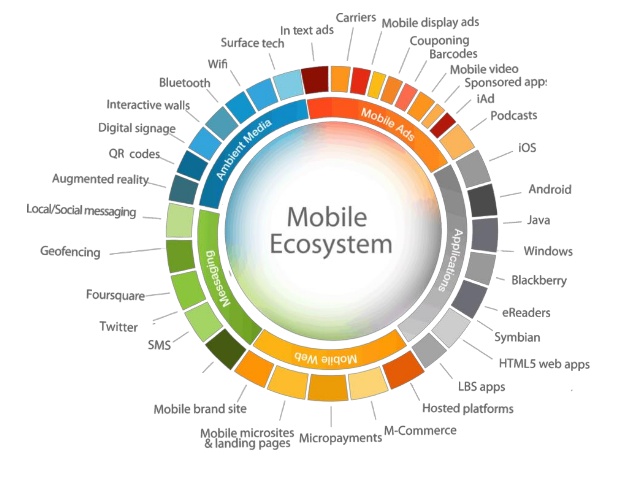Venturing into the mobile app development world is a common choice nowadays. Professionals with the right skills want to set up their own business and start creating apps that will dominate the market in the coming time. A developer, irrespective of whether he is a business owner or an employee, often has to make some critical choices before starting the development.
The choices are basically guided by a client’s requirement of operating systems, native or hybrid apps, etc. But, there are bigger decisions to be made to ensure that the entire development phase passes smoothly. And, the biggest decision is to choose the right ecosystem. The options are practically endless with all having something and missing something. So, how do you decide the right ecosystem.
What Is a Mobile Ecosystem?
A mobile ecosystem comprises of the operating platforms like iOS, Android, etc.; devices types like phones or tablets; and distribution mediums like online stores of respective operating platform. The primary distinguishing factor is the operating system which has four major players: Apple iOS, Google Android, Microsoft Windows, and Blackberry RIM. Each operating platform has a set of devices like iPhone and iPad for Apple and then there are associated pros and cons.
What Factors Come into Play While Choosing the Right Ecosystem?
First, the right ecosystem is the one that fits your needs. So, no ecosystem is bad, it is just how well it aligns with your requirement of the operating platform, device, and distribution medium. Besides the usual factors that come into play, I will list the factors that you should consider while choosing the ecosystem.
- The Purpose: Each application is designed for a purpose. For example, a gaming application is designed to provide leisure to audiences or a content-based application for providing information. The first thing to consider is the functionality that you will be using in your app. So, if it is a gaming app, it will require animation and use of visual effects. Deciding the right platform on the basis of the best offering of that platform is what you are required to do.
- The Users: At the end of the day, you are developing an app for end users or target audience. Before, beginning the development, you would have thought about the age group that you are targeting. For example, a gaming app would be more suited for younger generation therefore devices are not a concern; but an informative app for older generation might require you to think about the device choice as well and thus choose ecosystem accordingly.
- The Revenue: An app build for whatever purpose at the end might focus on generating money. Although, there are different approaches to take here like making a paid app or a free app with paid features. Each operating platform has its advantages. While some has elite clientele, who would not mind paying for the app; others have mass client where downloads will not be a problem.
After a careful consideration of these factors, you should be able to choose the right ecosystem and even correct the wrong ecosystem choices that you might made in the past. Let us know if there is anything else that you would consider while choosing an ecosystem.
Author Bio:
This article has been written by Rosina De Palma. She is a tech writer and blogger at nex Mobility which is a well-known name for android app development India. SHe also knows the basics of computer programming and interested to learn android development.

